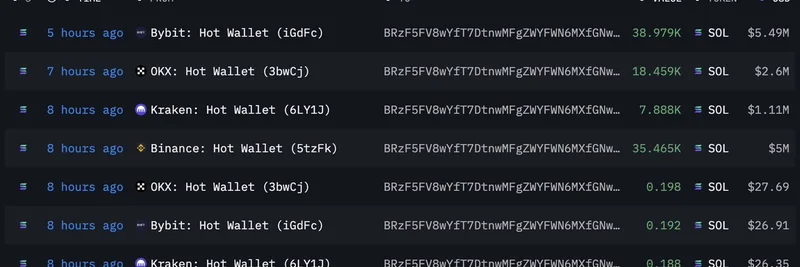In the bustling streets of Buenos Aires, Ari Eiberman, a web3 payments enthusiast and serial tester, recently took Jesse Pollak—the visionary behind Base, Coinbase's Ethereum Layer 2 network—for a leisurely stroll. The duo delved into some of the hottest topics in crypto: onchain banking, payment apps, and the burgeoning role of stablecoins in Latin America. If you're in the meme token world, this conversation hits close to home, as stablecoins often serve as the gateway for trading volatile assets like memes on platforms like Base.
The highlight? A video clip shared by Eiberman on X (formerly Twitter), where Pollak breaks down his perspective on "new banking on blockchain rails." For those new to the term, onchain banking refers to financial services built directly on blockchain networks, leveraging smart contracts for everything from transfers to lending—cutting out traditional banks and their hefty fees. It's like upgrading from a clunky old ATM to a seamless, global app that runs 24/7.
In the clip, Eiberman kicks things off by noting how he's been buzzing about this "new banking" era. He mentions the lack of standard terminology—some call it onchain banking—but he's eager for Pollak's take. Pollak doesn't disappoint, explaining it as the perfect marriage of fintech lessons from the past decade and crypto's powerful infrastructure.
"It's basically people taking what we've learned about how to deliver experiences globally over the last decade or so with fintech and putting that on this incredibly powerful new platform that's on chain," Pollak says. He emphasizes the perks: products that are global by default, with way more flexibility for complex stuff like financial management, lending, and borrowing. Plus, users get plugged into a fresh global economy powered by blockchain.
This ties directly into Latin America's stablecoin scene, where currencies like the Argentine peso face wild inflation. Stablecoins like USDC and USDT have become lifelines for everyday folks and businesses, offering stability pegged to the US dollar. Pollak's raw take? It's the "consummation" of crypto tech applied to real-world fintech needs. And get this—he's hyped about the entrepreneurs building these apps, noting how they're scaling fast.
While the video focuses on the big picture, Eiberman's post hints at specifics: teams "cooking" on Base. Base has exploded as a hub for DeFi and, yes, meme tokens. Think about it—stablecoins make it easier to jump into meme trades without worrying about fiat volatility. Projects like Aerodrome Finance for DEX trading or Moonwell for lending are prime examples of onchain finance in action. In Latin America, apps like Belo or Ripio are already blending crypto with daily payments, and Base could supercharge that.
For meme token enthusiasts, this matters because onchain banking could mean faster, cheaper ways to swap stables for your favorite dog-themed coins. Imagine borrowing against your meme holdings via smart contracts or earning yield on stables while waiting for the next pump. Latin America's high stablecoin adoption—driven by economic challenges—positions it as a testing ground for these innovations, potentially spilling over to global meme markets.
Pollak's enthusiasm is contagious: "It's awesome, and you talk to the entrepreneurs—these apps are growing fast." As Base continues to onboard millions, keep an eye on how these developments shape the meme token landscape. If you're building or trading in web3, this stroll in Buenos Aires is a reminder that the future of finance is onchain, and Latin America's stablecoin boom is leading the charge.
Stay tuned for more updates on how blockchain tech intersects with meme culture right here on Meme Insider.



